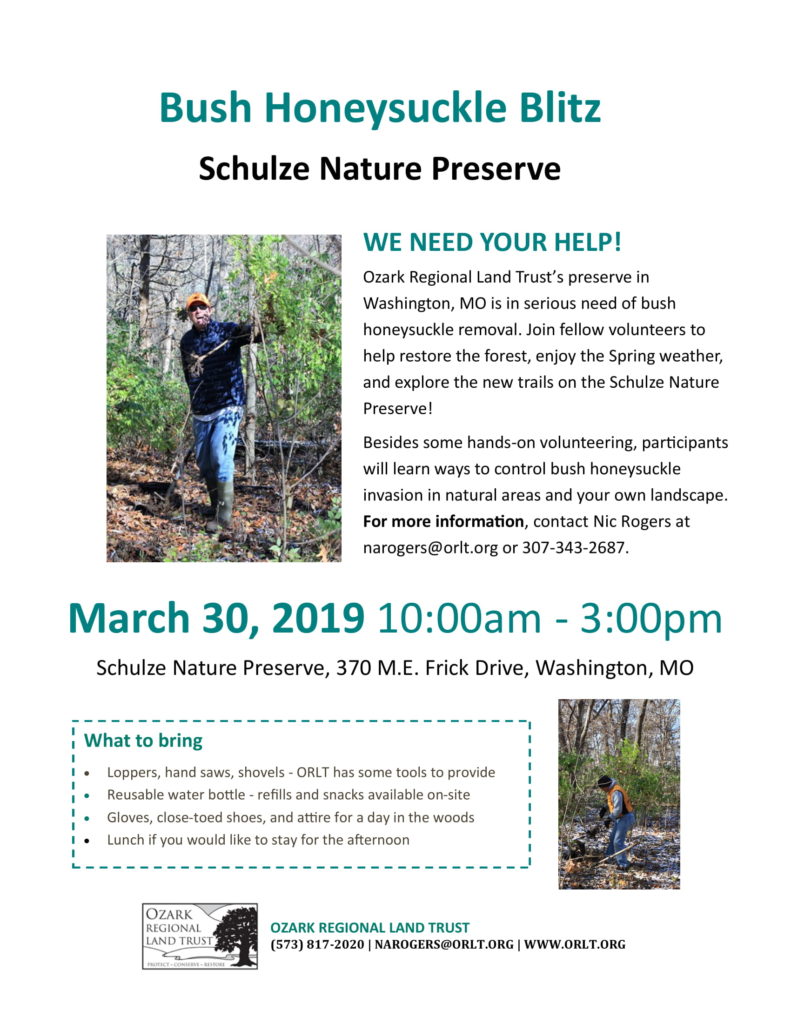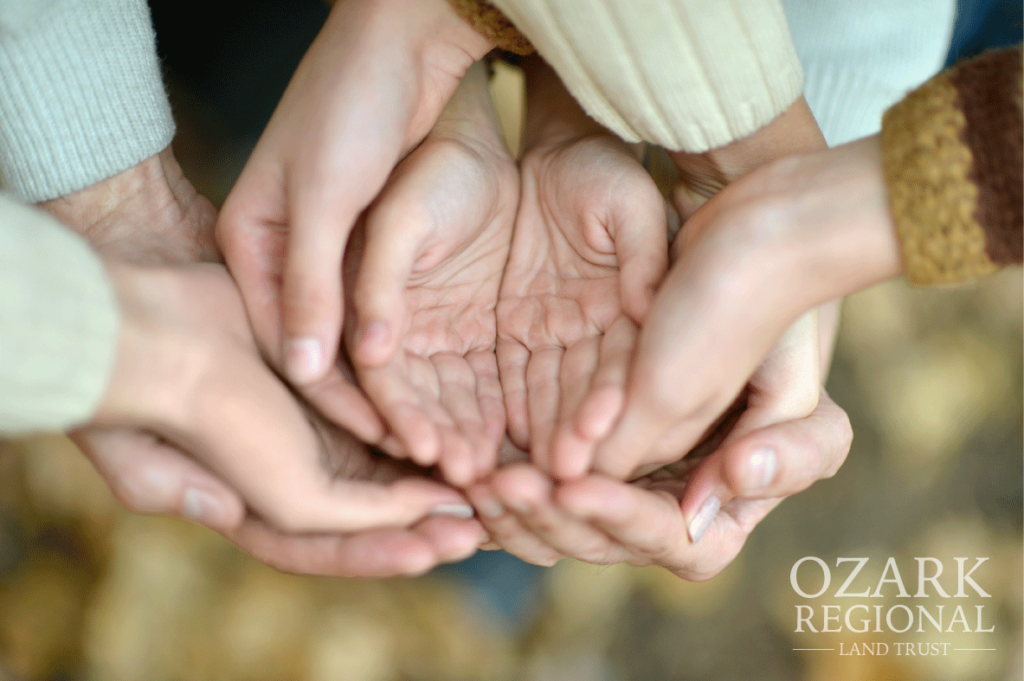 We are proud to announce that we've officially received our accreditation from the Land Trust Accreditation Commission! The accreditation is designated by the placement of this seal on our website and materials.
We are proud to announce that we've officially received our accreditation from the Land Trust Accreditation Commission! The accreditation is designated by the placement of this seal on our website and materials.
According to the commission, "The accreditation seal is a mark of distinction in land conservation. It is awarded to land trusts meeting the highest national standards for excellence and conservation permanence. Each accredited land trust completes a rigorous review process and joins a network of organizations united by strong ethical practices. This trusted network of land trusts has demonstrated fiscal accountability, strong organizational leadership, sound transactions and lasting stewardship of the lands they conserve."
Thank you to all of you who have worked with us over the years to help make this possible. We look forward to continuing the good work expected of land trusts who bear this seal!*Keep reading about the benefits of accreditation: https://www.landtrustalliance.org/blog/agency-partners-value-accreditation
35 Years!
 Not just a landscape, the Ozarks is a regional identity in culture, life and family traditions connected to the landscape. Out of a growing concern for the ecological welfare of the Ozarks in the late 1970s, the idea for a land trust was sparked; ORLT was founded in 1984. Over the past 35 years, ORLT has responded to the needs of conservation-minded landowners throughout the Ozarks and beyond. Almost 30,000 acres are now protected by ORLT, and we plan to protect another 1,200 acres in 2019! This reality is only made possible with your support and the generosity of landowners who donated land or conservation easements. Thanks to you we are able to protect the land you love. Keep it up!
Not just a landscape, the Ozarks is a regional identity in culture, life and family traditions connected to the landscape. Out of a growing concern for the ecological welfare of the Ozarks in the late 1970s, the idea for a land trust was sparked; ORLT was founded in 1984. Over the past 35 years, ORLT has responded to the needs of conservation-minded landowners throughout the Ozarks and beyond. Almost 30,000 acres are now protected by ORLT, and we plan to protect another 1,200 acres in 2019! This reality is only made possible with your support and the generosity of landowners who donated land or conservation easements. Thanks to you we are able to protect the land you love. Keep it up!
–Kelly O’Mara, Conservation Projects Manager
ORLT at the Missouri Natural Resources Conference (MNRC)
 Abigail Lambert, ORLT River Stewardship Project Coordinator and Missouri Department of Conservation partner Rob Pulliam presented information about private land conservation practices (e.g. partnering to implement cost-share programs and best management practices) at the annual Missouri Natural Resources Conference in early February. Their presentation was part of a 2-hour workshop Non-Profit Partners Uniting for Conservation Across MO for an audience of public natural resources agencies and a variety of private natural resources and conservation stakeholders. The goal of the workshop was to introduce natural resource professionals to the broad array of land conservation services offered and work being completed by private not-for-profit land trust partners across the state of Missouri. Other speakers included: The Nature Conservancy, Greenbelt Land Trust of Mid-Missouri, Missouri Prairie Foundation, and a conservation easement landowner.
Abigail Lambert, ORLT River Stewardship Project Coordinator and Missouri Department of Conservation partner Rob Pulliam presented information about private land conservation practices (e.g. partnering to implement cost-share programs and best management practices) at the annual Missouri Natural Resources Conference in early February. Their presentation was part of a 2-hour workshop Non-Profit Partners Uniting for Conservation Across MO for an audience of public natural resources agencies and a variety of private natural resources and conservation stakeholders. The goal of the workshop was to introduce natural resource professionals to the broad array of land conservation services offered and work being completed by private not-for-profit land trust partners across the state of Missouri. Other speakers included: The Nature Conservancy, Greenbelt Land Trust of Mid-Missouri, Missouri Prairie Foundation, and a conservation easement landowner.
*The MNRC is open to the public and held annually at Tan-Tar-A Resort in Osage Beach, MO. For more information go to: https://mnrc.org/
What to Look For In The Ozarks This Time Of Year
Depending on your microclimate, spring may have sprung or you may still be in winter’s grip. Either way, this is a great time of year to get outside and use your senses. This is breeding season for many wildlife species, which means they’re more active, and you’ll have better opportunities to see, hear, or smell them. This is also breeding season for some birds and amphibians. If you hear them, listen carefully to identify the caller. While you’re out, be sure to notice the little flowers and mushrooms that are popping up.
Here are just a few examples of what’s happening this time of year:
- Rabbits, coyotes, opossums, skunks, chipmunks, armadillos, muskrats, badgers, mink, river otters, and groundhogs (woodchucks) are breeding or bearing young.
- Salamanders move to breeding ponds, and many turtles become active.
- Listen for American woodcocks in brushy fields, wild turkey gobbles, the greater prairie-chicken’s “boom,” and for killdeer in disturbed open areas. Also, listen for spring peepers and chorus frogs.
- Flowering: silver maples, red maples, elms, Ozark witch hazel, harbinger of spring, aromatic sumac, bloodroot, Dutchman’s breeches, spring beauty, serviceberry, wild plum, and eastern redbud.
- Mushrooms: false turkey tail, turkey tail, artist conk, cinnabar polypore, violet toothed polypore, oyster mushroom, common split gill, gabled false morel, big red false morel, witches’ butter, scarlet cup
- Whitetail deer shed antlers
- Ticks!!!
-

- Woodcock
-

- Striped skunk
-

- Oyster mushroom
-

- Harbinger of spring
-

- Coyote
-

- Common split gill mushroom
Upcoming Event

Directions
The Schulze Nature Preserve is located at 370 M.E. Frick Drive, Washington, MO. When coming from the east on Highway 100, turn right onto Bluff Road at the signal (left if you are coming from the west) on the western edge of Washington. A short distance will bring you to a split in the road where it meets Westlink Drive at the beginning of an industrial park. Turn to the left (this will still be Bluff Road even though you will be turning), go up the hill, and then turn at the first road on the right: M.E. Frick Drive. (You will see Frick’s Quality Meats on your right.) Take this road a short distance up a hill, and there will be an entrance road for Frick’s Quality Meats straight ahead when M.E. Frick Drive turns to the left. Take this road straight to the bottom of the hill where the pavement ends. The last gravel parking spaces are part of the preserve.
Events Calendar
Looking for more events like the one above? Check out the Missouri Department of Conservation’s Natural Events Calendar. It lists a variety of natural events (like those above) happening throughout the year. If you aren’t familiar with it, then you’re missing out! Calendars can be purchased at http://www.mdcnatureshop.com/, at MDC nature centers and regional offices, or by calling 877-521-8632.
Check Us Out On Facebook!
What’s happening in your neck of the woods? Let us know on our Facebook page! You can find us here: https://www.facebook.com/OzarkRegionalLandTrust/
If you have photos from the Ozarks that you want to share with us (and possibly have shared on Facebook), submit them here using this form: https://goo.gl/forms/3rgET9qtM90Yyyr33/.
Donate Now

The work we’ve been doing for the past 35 years has helped ensure the land we manage will be conserved forever. In order to do this, we need to work now. The cost to conserve nature is going up. Securing lands from being developed and restoring damaged forests and prairies takes more money now than it did when we first started. It is more expensive to make sure our water systems are free from pollution and our public trails can be properly maintained for public access. Consider a one-time or recurring donation to Ozark Regional Land Trust and help leave better, healthier land for future generations.
